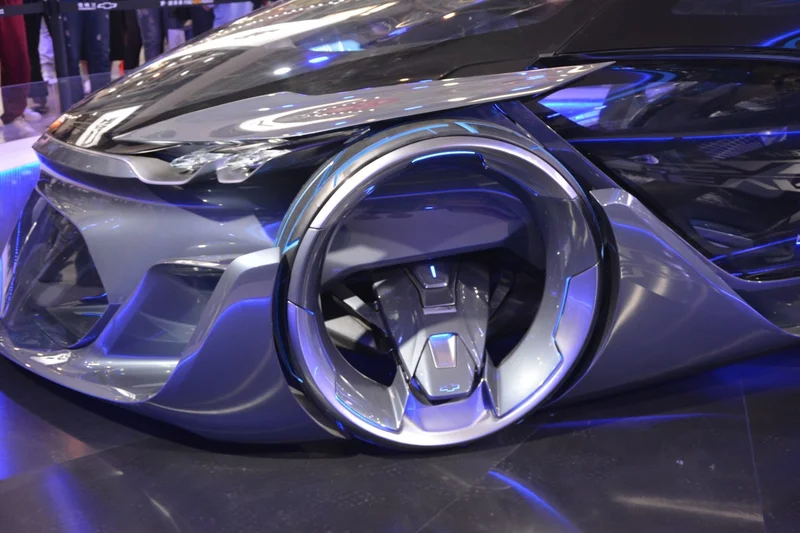Space Datacenters: AI Demand vs. Reality
Space Junk Isn't the Only Problem: Google's Space Data Centers Face a Collision of Tech and Reality
Orbital Obstacles and Earthly Concerns
The near-simultaneous headlines are… well, let's call them "interesting." On one hand, we've got the Shenzhou-20 crew stuck on Tiangong thanks to a rogue piece of space debris. The official line is "impact analysis and risk assessment are underway." Translation: nobody knows what's going on yet, but it doesn't sound good.
On the other hand, Google wants to put data centers in space. Eighty satellites, solar-powered, beaming AI results back to Earth. The rationale? Cheaper launch costs by the mid-2030s and less impact on terrestrial resources. They're calling it Project Suncatcher. Meet Project Suncatcher, a research moonshot to scale machine learning compute in space.
The juxtaposition is stark, bordering on darkly comical. One crew stranded by the very problem Google's plan exacerbates. But let’s put aside the obvious irony and dive into the numbers.
Google claims space-based data centers minimize the impact on land and water. True, in theory. Earth-bound data centers are thirsty beasts, and consume gigawatts of power (the spending has fueled rising concern about the impact on carbon emissions if clean energy is not found to power the sites). But let's not pretend launching hundreds—if not thousands—of satellites is carbon-neutral. Each rocket launch emits hundreds of tons of CO2. Google's own press release acknowledges "significant engineering challenges remain, such as thermal management, high-bandwidth ground communications and on-orbit system reliability.”
The Kessler Syndrome Cometh?
The Shenzhou-20 incident highlights a growing problem: space junk. The amount of debris is rising fast, and the article mentions the theoretical "Kessler Syndrome"—a chain reaction of collisions rendering low Earth orbit unusable.
Now, add 80-satellite constellations to the mix. Then add Elon Musk's plans to scale up space-based data centers. Then add Nvidia's AI chips launching with Starcloud. Suddenly, low Earth orbit starts looking less like a frontier and more like a demolition derby.

Philip Johnston, co-founder of Starcloud, claims a ten-times CO2 saving over the datacenter's lifespan compared to powering it terrestrially. Bold claim. I'd like to see the lifecycle analysis on that, accounting for manufacturing, launch, and inevitable de-orbiting and disposal. (I suspect the accounting is… optimistic).
And what about the optical links beaming data back to Earth? Google says they use light or laser beams. Great, unless something gets in the way. Like, say, space junk. Or weather. Or, dare I suggest, intentional interference? I've seen enough network diagrams to know that "free-space optical links" sound elegant on paper but are rarely as robust as a good old-fashioned fiber cable.
One of the Tiangong space station's solar panels was struck by debris in 2023, which triggered a partial power outage, according to Ars Technica. As a result, additional shielding has been added to parts of the station's exterior during recent spacewalks.
Here's the part of the story that I find genuinely puzzling: Google is planning to launch two prototype satellites by early 2027. That's less than 18 months away. Given the regulatory hurdles, technological challenges, and sheer complexity of launching anything into space, that timeline seems… aggressive. Optimistic, even. Maybe Google knows something we don't. Or maybe they're just really good at setting ambitious deadlines.
Prices of space launches are falling so quickly that by the middle of the 2030s the running costs of a space-based datacentre could be comparable to one on Earth, according to Google research released on Tuesday. Google plans to put datacentres in space to meet demand for AI
That cost parity claim is interesting. I'd want to see the assumptions baked into that model. What's the projected cost per launch? What's the expected lifespan of a satellite? What's the discount rate used to calculate present value? (Small changes in these assumptions can swing the entire analysis.)
Astronomers are Not Happy
There's another group that probably isn't thrilled about Project Suncatcher: astronomers. They're already complaining about the rising number of satellites interfering with their observations. Satellites are “like bugs on a windshield” when they are trying to peer into the universe. Adding constellations of data centers won't exactly improve the view.
The Real Cost is Hidden
Space junk is a problem. Google's solution, while innovative, seems to ignore the very real environmental and logistical challenges it creates. The carbon footprint of launches, the risk of Kessler Syndrome, the interference with astronomical observations… these are all costs that aren't fully accounted for in Google's sunny projections. It feels like a classic case of technological solutionism—solving a problem with more technology without fully considering the unintended consequences.
-

Warren Buffett's OXY Stock Play: The Latest Drama, Buffett's Angle, and Why You Shouldn't Believe the Hype
Solet'sgetthisstraight.Occide...
-

The Great Up-Leveling: What's Happening Now and How We Step Up
Haveyoueverfeltlikeyou'redri...
-

The Business of Plasma Donation: How the Process Works and Who the Key Players Are
Theterm"plasma"suffersfromas...
-

NJ's ANCHOR Program: A Blueprint for Tax Relief, Your 2024 Payment, and What Comes Next
NewJersey'sANCHORProgramIsn't...
-

The Future of Auto Parts: How to Find Any Part Instantly and What Comes Next
Walkintoany`autoparts`store—a...
- Search
- Recently Published
-
- Personal Injury Attorneys: What the Numbers Reveal About Top Firms
- Alibaba Stock: What's Driving the Price Action
- Yann LeCun: His Latest Vision and Future Insights
- BMO: Unlocking the Future of Finance, One Innovation at a Time
- The Rivian Stock Surge: An Analysis of the Rally and Its Sustainability
- Canton Network: The Hype, The Price, and The Inevitable Letdown
- WSAZ: Live News, Weather Data, and Regional Reports
- Ore: The Future of Everything?
- Monero's Privacy Surge: Price, Mining, and What the Crypto World Wants – What Reddit is Saying
- Comerica Bank: Locations, Hours, and the Quest for Customer Service
- Tag list
-
- carbon trading (2)
- Blockchain (11)
- Decentralization (5)
- Smart Contracts (4)
- Cryptocurrency (26)
- DeFi (5)
- Bitcoin (29)
- Trump (5)
- Ethereum (8)
- Pudgy Penguins (6)
- NFT (5)
- Solana (5)
- cryptocurrency (6)
- XRP (3)
- Airdrop (3)
- MicroStrategy (3)
- Stablecoin (3)
- Digital Assets (3)
- PENGU (3)
- Plasma (5)
- Zcash (6)
- Aster (4)
- investment advisor (4)
- crypto exchange binance (3)
- SX Network (3)
